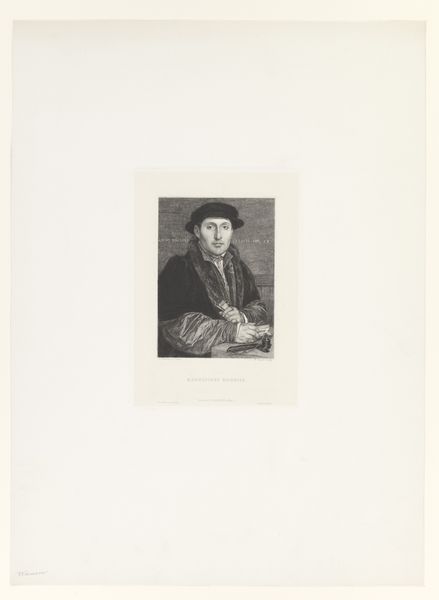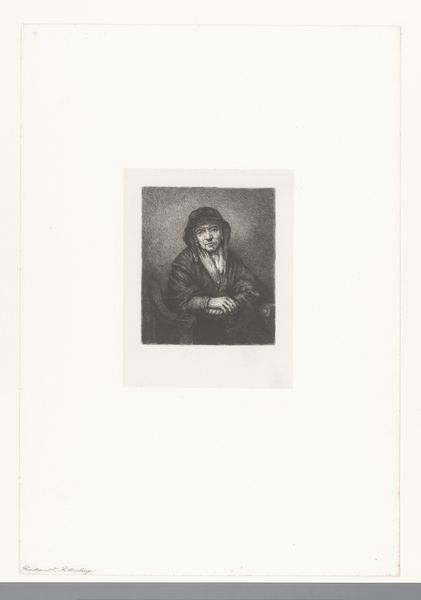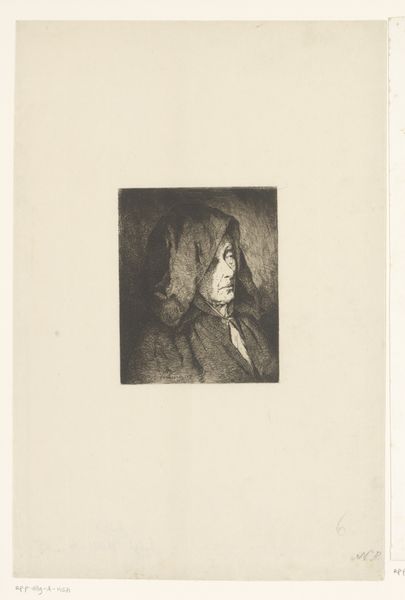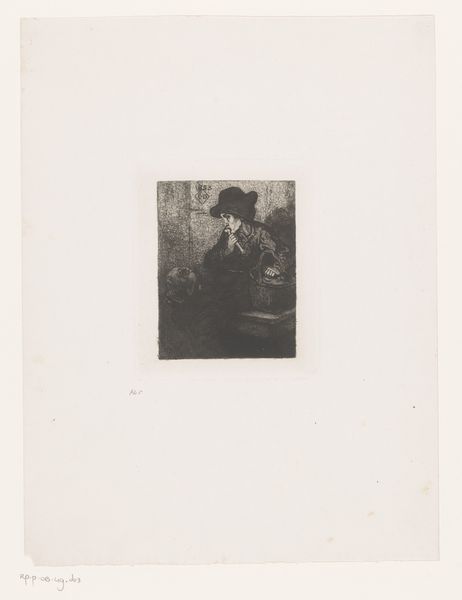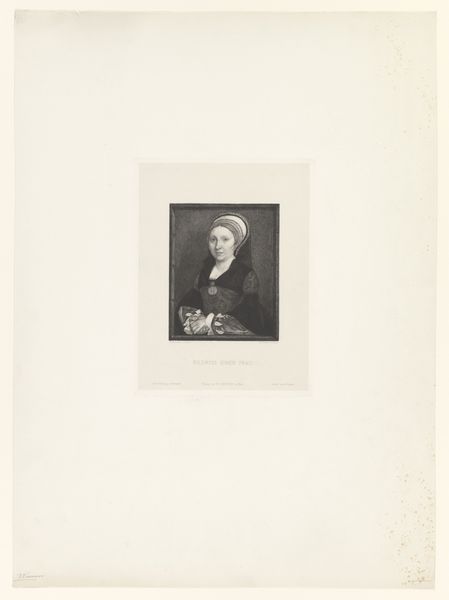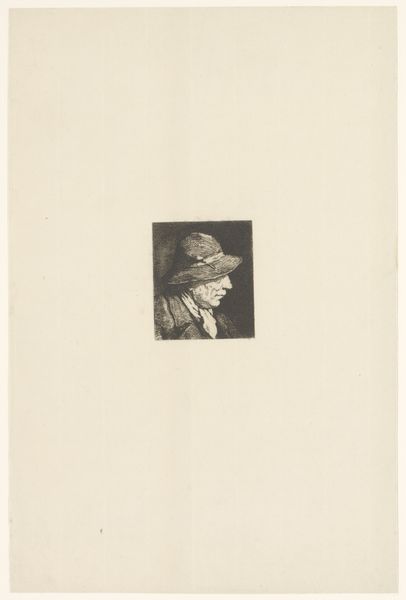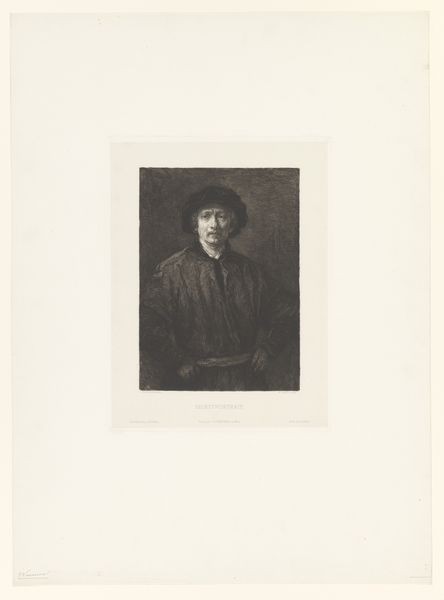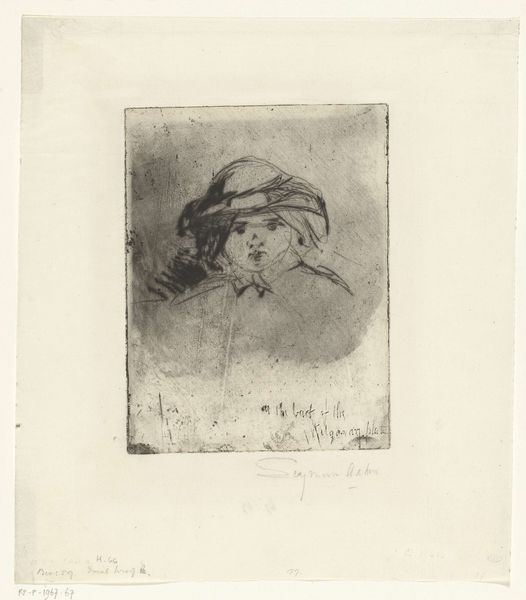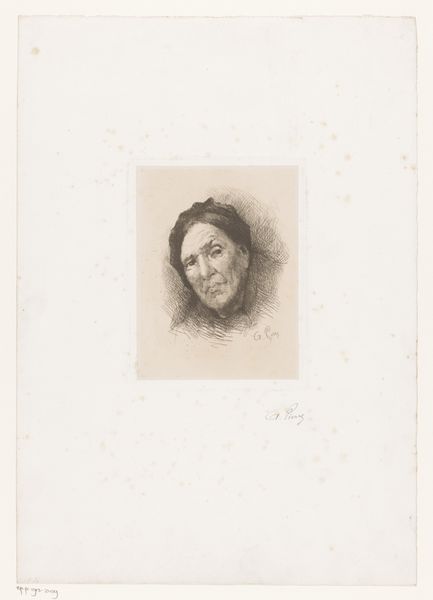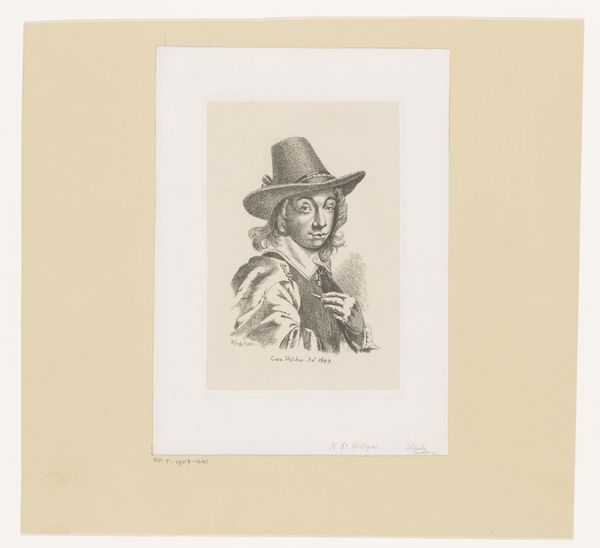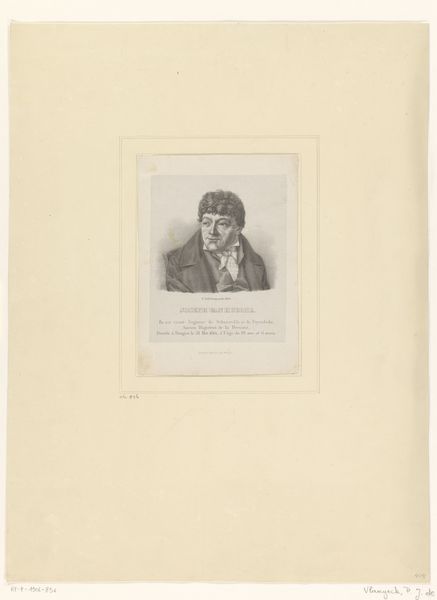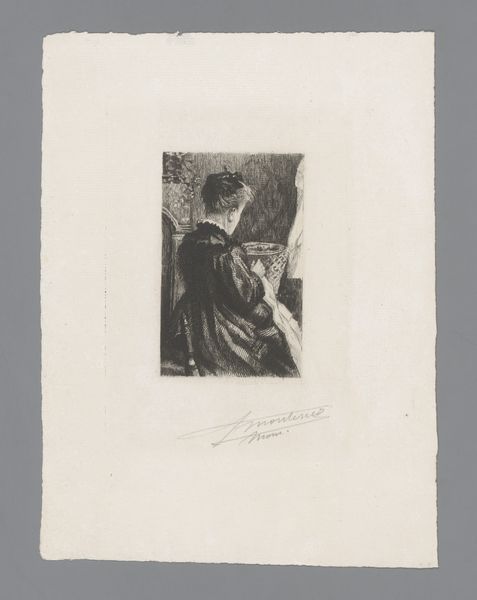
drawing, graphite
#
portrait
#
drawing
#
graphite
#
academic-art
#
realism
Dimensions: height 199 mm, width 149 mm
Copyright: Rijks Museum: Open Domain
Curator: This is a portrait made in 1886 by Ernest Haets, called "Portret van een onbekende man met hoge hoed"–"Portrait of an Unknown Man with Top Hat". Editor: He looks rather severe. The stark black and white graphite, combined with the high hat, certainly conveys authority, though a bit antiquated. Curator: Indeed. Portraits like this served a crucial function. In an age before ubiquitous photography, portraiture played a key role in shaping public identity, both for individuals and for the elites within society. This is an interesting example of academic realism. Editor: It’s the hat that gets me. A symbol of bourgeois power, especially in that period. I wonder, who was this man, and what was his place within that social structure? He exudes a very… calculated respectability. Almost as if he's being framed for posterity. Curator: Perhaps. The fact that he remains unidentified complicates matters, opening the piece to diverse readings. His clothing is not overly ornamented, which perhaps underscores an attempt to highlight his intellectual prowess. It’s interesting to see that although academic, there is something realist to the point of confronting the viewer, and definitely questioning their relationship to power. Editor: Yes! There's a lack of idealization. You can see the wrinkles around his eyes, the set of his jaw... This wasn’t meant to flatter in a conventional way, it’s as if he wants to be remembered as capable. He almost stares defiantly. Who are you to question this man's place, this drawing screams? Curator: I concur. Haets skillfully captures something of his essence. He emphasizes this individual's gaze, making it a compelling piece that transcends the conventions of portraiture within that era. Editor: Exactly, and because the sitter is unknown, in a way, he comes to represent an entire generation, or at least a certain aspiration from that generation of males who wish to occupy a privileged status. This opens up an inquiry regarding the structures within bourgeois society and invites critique of their legacy. Curator: I see that legacy as twofold. While one legacy lives on through academic portraiture, one that helped establish these status hierarchies. And another one lives on questioning those status hierarchies as we rethink traditional methods in arts to explore topics such as power and social identities. Editor: Precisely. It makes me consider who gets remembered and the values society ascribes to them.
Comments
No comments
Be the first to comment and join the conversation on the ultimate creative platform.
